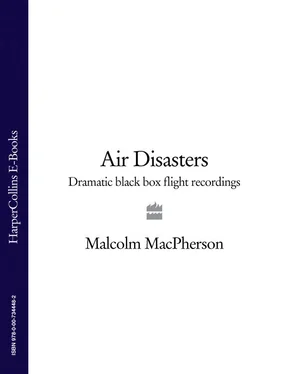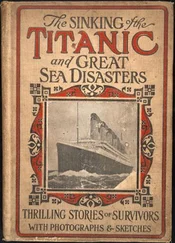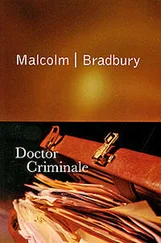To this was soon added another safety innovation—the nearly obsessive maintenance of records with which to cross-reference minute and large mechanical and other aircraft failures to forestall other identical (or similar) failures. For instance, when United Airlines DC-10 Flight 232 crashed while attempting to land in Sioux City, Iowa, on 19 July 1989, the NTSB determined post haste that engine failure, and specifically the failure of a single disc in one of the aircraft’s three fanjet engines, had caused the crash. Discs in six engines had been forged from the same alloy ingot, and in a matter of days the other five aircraft with engine discs made from that ingot were identified and grounded, thus eliminating the possibility of a second or third engine failure. That kind of thoroughness is unparalleled.
Over the years starting around 1963, pilot training improved as well. All cockpit crews today train in sophisticated, aircraft-specific simulators. Before simulator use, pilots necessarily acquired experience in the aircraft in real time, which clearly prevented exploration of the aircraft at the edge of its performance envelopes and beyond to see what would happen. Now, with simulators, pilots can crash aeroplanes over and over again while sitting inside a building. Not long ago, I flew ‘aboard’ a simulator of a Chinook military helicopter (MH-47) through an emergency crash/dive that had nearly killed everyone on board in Afghanistan a couple of years earlier. The helicopter pilot in Afghanistan was my pilot in the simulator at a US Army base, and such was the reality of the experience that even the simulator’s technical minders paled; with lights and horns blaring and the cockpit shaking and controls trembling, and, with mountainous Afghan terrain out of the front window, I did not feel that anything was being simulated. I walked away with the reassurance that cockpit crews are the best prepared and trained for any emergency ever.
For decades cockpits were considered authoritarian domains. Like that of a captain on board a ship, the word of the captain in the cockpit was law. Crashes and other incidents occurred when the captain failed to listen to a warning from the co-pilot or first officer. Sometimes, first officers did not even bother to speak up when they saw trouble ahead. Slowly, from around the mid-1980s, cockpit crews began to move away from stratification and develop a new structure in which the cockpit ‘team’ became the ruling entity. First officers were encouraged to speak up and captains were instructed to pay attention to them, for the sake of everyone’s safety. Older pilots who felt uncomfortable in this more democratic setting were asked to resign. The atmosphere improved immeasurably and in terms of safety everyone benefited, including the captain.
At the same time, a vast new array of technology emerged to assist cockpit crews. Technologies that monitor systems, navigate and effectively fly the aeroplane became commonplace in cockpits. And while these tools helped cockpit crews, the individual in the cockpit did not succumb to a natural inclination to rely on technology. Crews today are trained never to let the aeroplane be flown by computers against the pilot’s common sense and experience.
The weak link in safety is man, but that link can also be a last hope.
Taking safety an extra step into a realm where any unknown threat can be isolated and examined before an accident occurs, airlines today are making full use of a technology called Flight Operations Quality Assurance (FOQA), first developed in Europe (and known there as FDM or flight data management). FOQA uses flight data stored in quick-access recorders; the data are analyzed every dozen or so flights. Essentially, FOQA enables airlines to search the data for any events or trends that might signal a conflict with normal, or standard, operating procedures. It affords airlines a real-time audit of what’s going on. This can lead to changes that make flying safer. For example, United Airlines routinely examined FOQA data on its aircraft flying to Mexico City, where it noticed that oddly fast approaches to landing had the potential, at least, of causing runway overrun accidents. United wanted to know what was causing the faster approaches, and FOQA told them. Their aircraft were typically being told to turn early, before a designated intersection. That early turn put the aircraft higher—and thus faster—on the approach. Corrections were made and a potential problem was corrected before it actually arose.
FOQA has also helped to eliminate costly maintenance problems. In one recent example pilots were reporting that they did not know why they were exceeding maximum speeds for deploying wing flaps. The airline analyzed the FOQA data on their aircraft. They reported to these pilots that their speeds were on average only 1 knot or less over maximum. If the airline had gone on the word of the pilots it would have had no other choice but to take the aircraft out of service and disassemble the wing. With FOQA, no such response was necessary and costs were avoided and money saved. Other savings were found through FOQA in gasoline conservation. Conserving only one gallon of AVGAS over a flight by reaching higher altitudes sooner can save an airline tens of millions of dollars a year.
With the recent rapid growth of demand for airline services, new safety concerns will always occur in spite of efforts to anticipate them. One such current concern is called ‘runway incursion’.
While concentrating on making air travel safer in the air than on the ground, airports today are experiencing serious congestion problems on runways and taxiways—specifically, incursions. ‘There are more planes but not more cement’, one person associated with analyzing the issue told me. Congestion leads to incursions, which can lead to crashes and fatalities on the ground. The rate of new incursions has alarmed the US Federal Aviation Administration (FAA) and other nations’ oversight groups. In response, considerable effort is being made to warn cockpit crews directly of impending incursions. At the present time, warnings routinely pass through ground controllers who analyze the specific warnings before alerting the cockpit crews. Those precious lost minutes can make the difference between life and death. The FAA is also studying the benefits of obvious warning lights on runways and taxiways, similar to the lights at road intersections.
Commuter and regional airlines have come under the FAA’s microscope with increased demand for short-hop flights, which feed into major airline hubs. These flights are crashing at rates that worry air safety managers, who have focused their attention on operational crew training of regional airlines. And as more crews receive increased simulator time and intensified qualifying tests and checks, the safety record is bound to improve.
And, finally, to put your minds at rest, there are these astonishing statistics:
| Odds of being on an airline flight which results in at least one fatality |
Odds of being killed on a single airline flight |
| Top 25 airlines with the best records 1 in 6.06 million |
Top 25 airlines with the best records 1 in 10.46 million |
| Bottom 25 with the worst records 1 in 546,011 |
Bottom 25 with the worst records 1 in 723,819 |
But enough about air safety. No reader of this book will have got this far wanting to know more about flight safety. Let’s admit the obvious. This book is unabashedly about air un safety. The mention of air safety in an un safety book is a fig leaf for the real reason for publishing CVR transcripts. Over the years I have been editing books such as this some readers have told me that the CVR transcripts actually help calm their nerves, though I do not understand how, since most of the incidents recorded here end with dead bodies and charred aircraft. Truly, these transcripts should give readers the heebie-jeebies. Maybe the claims that nerves are calmed stem from rehearsing a disaster at a distance, imagining what we might do or not do in these same dire straits; the CVR transcripts give some readers the illusion of being in control, when, as passengers, we have absolutely no control over whether we live or die; and we know it. This might seem obsessive, but the thinking must go that if a reader follows these disasters often enough by rereading the CVR transcripts, when (and if) the time comes to experience one such incident for real he or she will be ready. Maybe that is true for some people. They have already been there, so to speak. But I also suspect that more readers follow the transcripts for their drama, as I did at the start. It is undeniable that they make riveting reading, because they document real life-and-death events as they unfold minute by minute from a spectacular angle. We can follow the activities, emotions and voices of cockpit crews from the instant something goes awry to a final outcome. And what can be more dramatic than for-real death or salvation? All drama, whether portrayed as fiction or fact, is necessarily voyeuristic. And what can be more intrusive than peeking from behind the curtain at the last frenzied, intimate moments in another human being’s life?
Читать дальше












